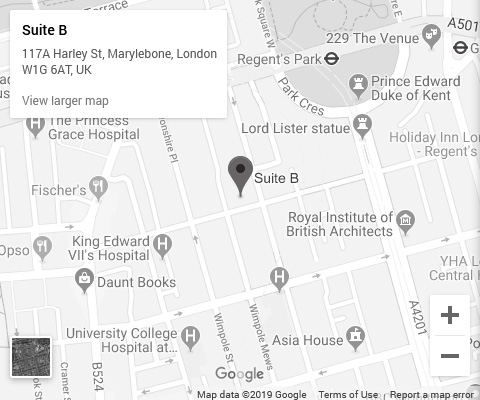
Cervical cancer is a topic that often flies under the radar, yet it affects thousands of women in the UK every year. According to Cancer Research UK, cervical cancer is one of the most preventable forms of cancer if caught early through regular screening. Despite this, many women delay or avoid getting tested due to fear, embarrassment, or misinformation. Early detection not only saves lives but also ensures treatment is simpler and less invasive. In this blog, we’ll unpack everything you need to know about cervical cancer—from its early warning signs to how and when to get tested—so you can take charge of your health.
What Is Cervical Cancer?
Cervical cancer begins in the cells lining the cervix, which connects the uterus to the vagina. Most cases are caused by persistent infection with high-risk strains of the human papillomavirus (HPV), a common sexually transmitted virus. While HPV infections are widespread—and often harmless—the immune system usually clears them within two years. However, in some cases, these infections linger and cause abnormal cell changes that can lead to cancer over time.
In the UK, cervical cancer predominantly affects women aged 25–64, which is why the offers free cervical screenings specifically for this age group. These screenings, sometimes called smear tests, check for abnormal cells before they become cancerous. If left untreated, these precancerous cells can develop into full-blown cervical cancer, making regular check-ups critical.
Why Early Detection Matters
The sooner cervical cancer is detected, the better the chances of successful treatment. Early-stage cervical cancer often has no symptoms, which is why routine screening is so vital. Unfortunately, many women skip their appointments because they assume they’re “too healthy” to have anything wrong. This mindset can be dangerous; just because you feel fine doesn’t mean you’re risk-free.
Consider this: according to statistics, around 9 out of 10 women diagnosed at an early stage survive cervical cancer for at least five years. Compare that to advanced-stage diagnoses, where survival rates drop significantly. By staying on top of your screenings, you give yourself the best possible chance of catching issues early—or even preventing them altogether.
Early Signs and Symptoms to Watch For
While cervical cancer might not show symptoms initially, certain red flags warrant attention. Here’s what to look out for:
Unusual Vaginal Bleeding
One of the most common early signs is bleeding between periods, after sex, or post-menopause. This type of bleeding isn’t always sinister—it could stem from hormonal fluctuations or other benign causes—but it’s worth investigating further. Keep track of any patterns and report them to your GP.
Pain During or After Sex
Pain during intercourse, medically known as dyspareunia, is surprisingly common. Many women dismiss it as normal, especially if they’ve experienced it intermittently before. However, persistent pain should never be ignored, as it could indicate underlying problems like cervical abnormalities.
Changes in Vaginal Discharge
A sudden change in discharge consistency, colour, or smell can signal trouble. Watery, foul-smelling, or blood-streaked discharge may point to cervical cancer or another condition requiring medical evaluation.
Pelvic or Lower Back Pain
Chronic pelvic pain unrelated to menstrual cycles or injuries can be concerning. Similarly, lower back pain that persists despite rest or over-the-counter remedies might hint at deeper issues.
Fatigue, Weight Loss, or Swelling
These symptoms typically emerge in later stages but shouldn’t be overlooked. Persistent fatigue, unexplained weight loss, or leg swelling could indicate advanced cervical cancer and require immediate attention.
When to See a GP or Get Tested in the UK
If you notice any combination of the above symptoms, don’t hesitate to see your GP. They can assess whether further investigation is needed. Remember, it’s better to err on the side of caution—many of these symptoms can arise from non-cancerous conditions, but only a professional can rule out something more serious.
Booking a cervical screening test is straightforward. Simply contact your GP surgery or local clinic to schedule an appointment. The sends automatic invitations to eligible women aged 25–64, but you can request a test outside of these reminders if necessary. If your GP suspects cervical cancer based on your symptoms or screening results, they’ll refer you urgently for additional tests, such as a colposcopy.
Take Charge of Your Health Today
Don’t ignore early signs. Book your cervical cancer screening now to ensure peace of mind and early detection.
Cervical Screening in the UK: What You Need to Know
The cervical screening programme is designed to catch abnormalities long before they turn cancerous. Women aged 25–49 are invited every three years, while those aged 50–64 receive invitations every five years. It’s important to attend these appointments, even if you’ve had the HPV vaccine, as the vaccine doesn’t protect against all high-risk HPV strains.
During the procedure, a nurse collects a small sample of cells from your cervix using a soft brush. Though slightly uncomfortable, it’s quick and painless. Results usually arrive within two weeks, and if anything unusual is found, you’ll be guided through the next steps, which may include repeat testing or treatment.
HPV Testing vs Smear Test – What’s the Difference?
You’ve probably heard of both HPV tests and smear tests, but what sets them apart? A smear test checks for abnormal cells directly, whereas an HPV test looks for the presence of high-risk HPV types. Since nearly all cervical cancers are linked to HPV, detecting the virus early allows doctors to monitor patients more closely.
In the UK, the has integrated HPV testing into its screening programme. If your smear test shows abnormal cells, an HPV test helps determine the level of risk. Conversely, if your HPV test comes back negative, you’re considered low-risk for several years.
Overcoming Fear and Myths About Cervical Testing
Let’s face it: talking about cervical cancer and undergoing screening can feel awkward or intimidating. Some women worry about pain, while others dread potential bad news. But here’s the truth: the discomfort of a smear test lasts mere minutes, and catching issues early means avoiding far more invasive treatments down the line.
Open conversations with friends, family, or healthcare providers can help demystify the process. Remember, there’s no shame in prioritising your health—it’s empowering.
Prevention and Lifestyle Tips
Beyond regular screenings, there are proactive steps you can take to reduce your cervical cancer risk:
Get vaccinated: The HPV vaccine is available free through the for girls aged 12–13, with catch-up options for older teens. Even if you missed it as a teen, ask your GP about eligibility.
Practice safe sex: Using condoms reduces the risk of contracting HPV, though it’s not foolproof since the virus can infect areas not covered by protection.
Prioritise overall wellbeing: Eating a balanced diet, exercising regularly, and managing stress support your immune system, helping it fight off infections like HPV.
Summary: Don’t Wait — Get Tested Early
To recap, recognising the early signs of cervical cancer—such as unusual bleeding, pain during sex, or changes in discharge—is crucial. Regular screenings play a pivotal role in prevention, so make sure you attend yours when invited. If you experience any concerning symptoms, don’t brush them off; book an appointment with your GP promptly.
Your health is worth investing in. So, if you haven’t been screened recently or are experiencing anything unusual, act now. Call to Action: If you notice any unusual symptoms or are due for a smear test, book an appointment with your gynaecology expert today. Your future self will thank you.






-in-the-UK.jpg)

